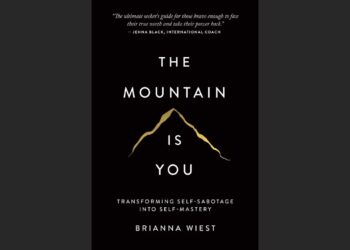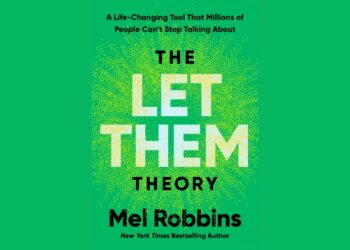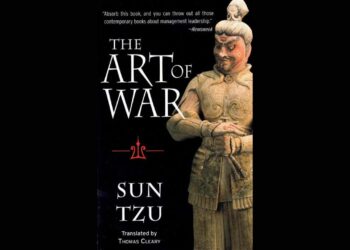Table of Contents
- Introduction: Understanding the Core Message
- The Concept of “Loving Too Much”
- Childhood Roots: Where the Pattern Begins
- The Cycle of Loving Too Much
- Case Studies and Real-Life Stories
- Recognizing the Signs
- The Path to Healing
- The Role of Therapy and Support Groups
- Developing Healthy Love
- Key Lessons and Takeaways
- Why the Book Still Matters
- Conclusion: From Pain to Power
Introduction: Understanding the Core Message
Robin Norwood’s Women Who Love Too Much is more than a self-help book—it is a mirror held up to the lives of countless women who find themselves repeatedly drawn to destructive relationships despite their best intentions. The book reveals a painful but illuminating truth: many women mistake obsession, control, and sacrifice for love, believing that if they just love hard enough, they can “fix” a partner or make a dysfunctional relationship work. Norwood calls this phenomenon loving too much, a pattern that goes beyond romantic disappointment and stems from deep psychological roots.
The book is written as a compassionate guide for women who consistently find themselves loving men who are emotionally unavailable, abusive, addicted, or incapable of healthy commitment. With gripping case studies, psychological insights, and a clear path to recovery, Norwood helps readers recognize how childhood wounds create adult patterns of self-sacrifice and teaches them to redirect their love toward themselves first.
The Concept of “Loving Too Much”
Norwood defines “loving too much” as an addiction to relationships where pain, anxiety, and drama become intertwined with affection. Women who love too much often:
- Obsess over their partner’s moods, needs, and problems.
- Confuse intensity with intimacy, mistaking chaos for love.
- Believe their love can rescue or change someone who is emotionally wounded, addicted, or neglectful.
- Sacrifice their own well-being—emotionally, financially, or physically—to maintain the relationship.
These behaviors are not simply about low self-esteem or poor choices. Norwood argues that they are learned patterns, often rooted in childhood experiences with unavailable or dysfunctional caregivers. Loving too much becomes a subconscious attempt to replay and “fix” those early dynamics.
Childhood Roots: Where the Pattern Begins
One of the most powerful sections of the book explores the origins of these unhealthy relationship patterns. Norwood emphasizes that women who love too much often grew up in households where love was conditional, chaotic, or absent. Common experiences include:
- Alcoholic or addicted parents – Growing up with addiction normalizes instability and teaches children to become caretakers.
- Emotionally unavailable parents – When love is inconsistent, children learn to chase affection and confuse unpredictability with excitement.
- Early responsibility – Children who had to “parent their parents” often grow into adults who feel compelled to rescue others.
These early wounds create adults who are unconsciously drawn to partners who replicate the emotional atmosphere of childhood. For example, a woman raised by a distant father may repeatedly fall for emotionally cold men, believing that if she can finally “win” their love, she will heal her childhood hurt.
The Cycle of Loving Too Much
Norwood describes a recurring cycle that women trapped in these relationships experience:
- Attraction to the Unavailable – Women feel an almost magnetic pull toward men who are troubled, distant, or addicted.
- The Fixer Role – Believing their love can heal the partner, they over-function, giving more time, money, and energy than they receive.
- Intensification of Pain – As the partner remains unchanged or grows more abusive, anxiety and obsession grow stronger.
- Temporary Relief – Brief moments of affection or improvement feel euphoric, reinforcing the addiction.
- Repeated Disappointment – The relationship collapses or stagnates, and the woman either clings tighter or seeks another similar partner.
This cycle mirrors the highs and lows of substance addiction, which is why Norwood likens loving too much to a form of love addiction.
Case Studies and Real-Life Stories
Throughout the book, Norwood shares poignant case studies of women who struggled with these patterns.
- The Woman Who Couldn’t Leave – Despite emotional abuse, she stayed with a partner for years, believing her love would redeem him.
- The Rescuer – A successful professional who repeatedly chose men with addictions, spending her energy on saving them while neglecting her own needs.
- The Repeat Pattern – A woman who left one toxic relationship only to find herself in another nearly identical one.
These stories illustrate that loving too much is not about weakness or lack of intelligence; many of these women were strong, capable, and successful in other areas of life. The problem lay in their unconscious emotional conditioning.
Recognizing the Signs
Norwood provides a clear list of warning signs that a woman might be “loving too much”:
- Feeling anxious, depressed, or obsessed when not in contact with the partner.
- Constantly making excuses for the partner’s hurtful behavior.
- Sacrificing personal goals, friendships, or self-care to maintain the relationship.
- Believing that if she can love more, the partner will finally change.
- Being more focused on the partner’s needs than her own.
Recognition is the first step toward change. Norwood urges readers to honestly examine their relationships and childhood histories without shame.
The Path to Healing
Healing from loving too much is not a quick fix. Norwood outlines a step-by-step recovery process that parallels addiction recovery. Key components include:
- Acknowledgment – Admitting that the pattern exists and that love has become an addiction.
- Support Systems – Joining groups such as Al-Anon or therapy to share experiences and receive guidance.
- Breaking Isolation – Building friendships and support networks outside the romantic relationship.
- Self-Focus – Redirecting energy toward self-care, hobbies, career, and personal growth.
- Inner Child Work – Identifying and nurturing the wounded inner child who still seeks parental love through adult relationships.
- Spiritual Growth – Many women find strength through meditation, prayer, or a higher power.
Norwood stresses that recovery requires consistent effort, honesty, and often professional help. It is about learning to love oneself enough to demand healthy relationships.
The Role of Therapy and Support Groups
Norwood repeatedly highlights the importance of therapy, counseling, and peer support groups like Al-Anon or Co-Dependents Anonymous. These safe environments help women:
- Share their stories without judgment.
- Recognize recurring patterns.
- Develop healthier coping mechanisms.
- Build a sense of self-worth independent of romantic relationships.
Through group work, women discover they are not alone and begin to break the cycle of secrecy and shame that fuels unhealthy love.
Developing Healthy Love
The ultimate goal is not to avoid relationships but to create healthy ones. According to Norwood, a loving, balanced relationship is characterized by:
- Mutual respect and equality.
- Emotional availability and clear communication.
- Personal independence—two whole individuals sharing life, not two wounded people clinging to each other.
- Stability, where love is calm and nurturing, not dramatic or painful.
Women who recover often find that their attraction to unavailable partners diminishes. Instead, they are drawn to stable, kind, emotionally mature individuals—people they might once have dismissed as “boring.”
Key Lessons and Takeaways
- Love Is Not Enough – No amount of love can change someone who is unwilling to change.
- You Cannot Rescue Another Person – Healing is an inside job; you cannot do it for your partner.
- Childhood Patterns Repeat Until Addressed – Without awareness, old wounds will drive relationship choices.
- Self-Love Is the Foundation of Healthy Love – Only by valuing yourself can you create balanced relationships.
- Recovery Is Lifelong – Like any addiction, loving too much requires ongoing self-care and vigilance.
Why the Book Still Matters
Since its first publication in 1985, Women Who Love Too Much has remained a classic because the issues it addresses are timeless. The cultural expectations for women to nurture, sacrifice, and “stand by their man” continue to trap many in unhealthy relationships. In an era of social media and dating apps, the temptation to chase validation is stronger than ever, making Norwood’s insights especially relevant.
The book empowers women to break free from cycles of suffering and to see love not as a desperate quest for validation but as a partnership between equals.
Conclusion: From Pain to Power
Women Who Love Too Much is a roadmap from self-abandonment to self-love. Robin Norwood does not offer easy solutions but provides a compassionate, structured path for women who feel trapped in destructive relationships. Her message is ultimately one of hope: no matter how deep the wounds, healing is possible.
By understanding childhood origins, acknowledging painful patterns, seeking support, and committing to self-care, women can transform their relationships—and their lives. Love, when healthy, is not about fixing someone else; it is about two whole people sharing their journeys without losing themselves in the process.
This book is not only for women in crisis but for anyone who wants to understand the complex intersection of love, addiction, and self-worth. It teaches that true love begins with loving oneself enough to say no to pain and yes to peace.




















